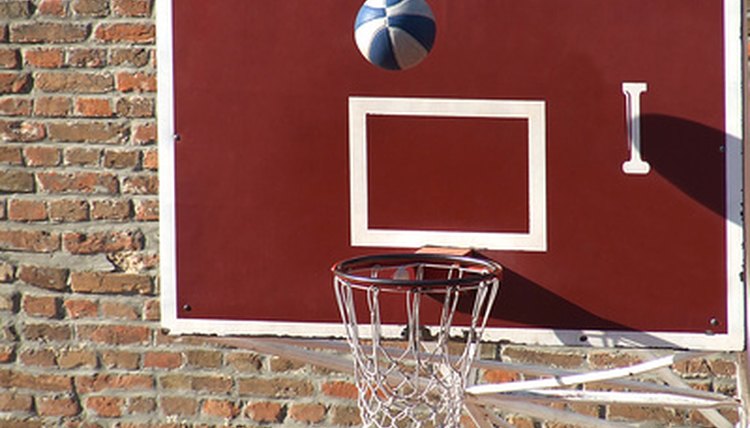Amateur Basketball Rules & Regulations

Amateur basketball includes everything from college basketball to city programs that introduce the game to young kids. The main sources of rules that govern the game are put out by the NCAA and the National Federation of State High School Associations, the keepers of the rules for high school sports. The rules in place in middle schools, AAU basketball and recreational leagues all follow the guidelines put in place for the college and high school games.
The Court
The regulation basketball court is 94 feet long and 50 feet wide. The free-throw line is 15 feet from the rim, and the lane area is 12 feet wide by 19 feet deep. The three-point line for amateur basketball is 19 feet 9 inches out all the way around.
Traveling
Basketball players are required to dribble or pass the basketball when they move around the court. When a player has possession of the ball, she establishes a pivot foot, and she can then move the other foot in any direction as many times as she wants as long as the pivot foot remains anchored to the floor. Moving the pivot foot or taking more than one step without putting the ball on the floor is traveling and leads to loss of possession. The dribbler must also keep his hand on top of the ball while dribbling it. If he puts his hand under the ball and turns it over to bounce it, it is a form of traveling, more common called palming.
Fouls
Fouls in basketball occur when one player makes contact with another in a way that impedes her ability to make a play. A player fouled in the act of shooting the ball gets two free throws, three if the shot was attempted behind the three-point arc. A foul committed in a non-shooting situation gets the team the ball out of bounds until the team reaches a cumulative total of seven team fouls in a half. That situation puts the opponent in the bonus and they get to shoot free throws even for non-shooting fouls. Fouls No. 7, 8 and 9 bring a one-and-one situation in which the shooter earns a second shot only if he makes the first. A team with 10 team fouls gives up a two-shot foul for every violation. An individual player is eliminated from the game if she commits five fouls.
Time Issues
College basketball games, both men's and women's play two 20-minute halves, followed by five-minute overtime periods if the score is tied after regulation. High school basketball is played in four eight-minute quarters, with four-minute overtime period if that is required.
A player has five seconds to pass the ball to a teammate once the referee hands him the ball on an in-bounds play. The team bringing the ball up court has 10 seconds to get over the half-court line or it is a violation as well. Both of these result in a change of possession to the other team.
References
- NCAA Basketball: 2010 and 2011 Men's and Women's Rules and Regulations
- "Boys Basketball Rules Book," National Federation of State High School Associations; 2010
Writer Bio
Kurt Johnson began writing in 1995. He has a passion for sports and has spent more than 15 years as a coach. He is a sportswriter who has been published at Front Page Sports and in the "Sacramento Union." Johnson has a Bachelor of Arts in communications from Brigham Young University.
